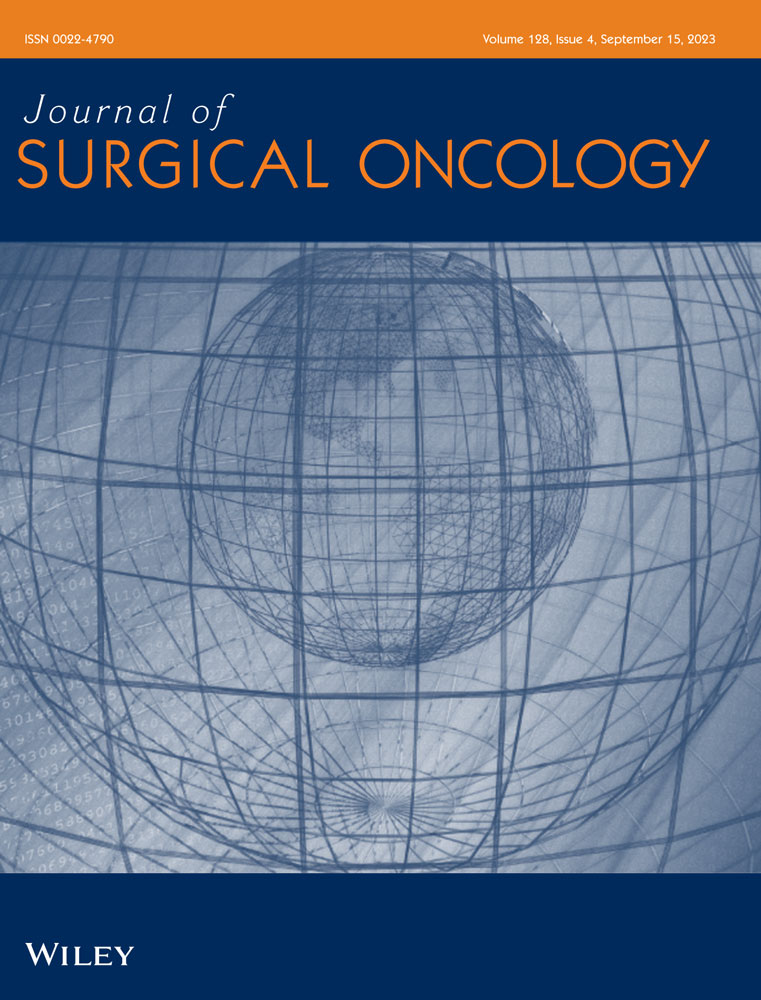A prediction model to refine the timing of an early second-look laparoscopic exploration in patients with colon cancer at high risk of early peritoneal metastasis recurrence
Abstract
Background
In patients at high risk of peritoneal metastasis (PM) recurrence following surgical treatment of colon cancer (CC), second-look laparoscopic exploration (SLLE) is mandatory; however, the best timing is unknown. We created a tool to refine the timing of early SLLE in patients at high risk of PM recurrence.
Methods
This international cohort study included patients who underwent CC surgery between 2009 and 2020. All patients had PM recurrence. Factors associated with PM-free survival (PMFS) were assessed using Cox regression. The primary endpoint was early PM recurrence defined as a PMFS of <6 months. A model (logistic regression) was fitted and corrected using bootstrap.
Results
In total, 235 patients were included. The median PMFS was 13 (IQR, 8–22) months, and 15.7% of the patients experienced an early PM recurrence. Synchronous limited PM and/or ovarian metastasis (hazard ratio [HR]: 2.50; 95% confidence interval [CI]: [1.66–3.78]; p < 0.001) were associated with a very high-risk status requiring SLLE. T4 (HR: 1.47; 95% CI: [1.03–2.11]; p = 0.036), transverse tumor localization (HR: 0.35; 95% CI: [0.17–0.69]; p = 0.002), emergency surgery (HR: 2.06; 95% CI: [1.36–3.13]; p < 0.001), mucinous subtype (HR: 0.50; 95% CI [0.30, 0.82]; p = 0.006), microsatellite instability (HR: 2.29; 95% CI [1.06, 4.93]; p = 0.036), KRAS mutation (HR: 1.78; 95% CI: [1.24–2.55]; p = 0.002), and complete protocol of adjuvant chemotherapy (HR: 0.93; 95% CI: [0.89–0.96]; p < 0.001) were also prognostic factors for PMFS. Thus, a model was fitted (area under the curve: 0.87; 95% CI: [0.82–0.92]) for prediction, and a cutoff of 150 points was identified to classify patients at high risk of early PM recurrence.
Conclusion
Using a nomogram, eight prognostic factors were identified to select patients at high risk for early PM recurrence objectively. Patients reaching 150 points could benefit from an early SLLE.
CONFLICT OF INTEREST STATEMENT
The authors declare no conflict of interest.
Open Research
DATA AVAILABILITY STATEMENT
The data that support the findings of this study are available from the corresponding author upon reasonable request.




